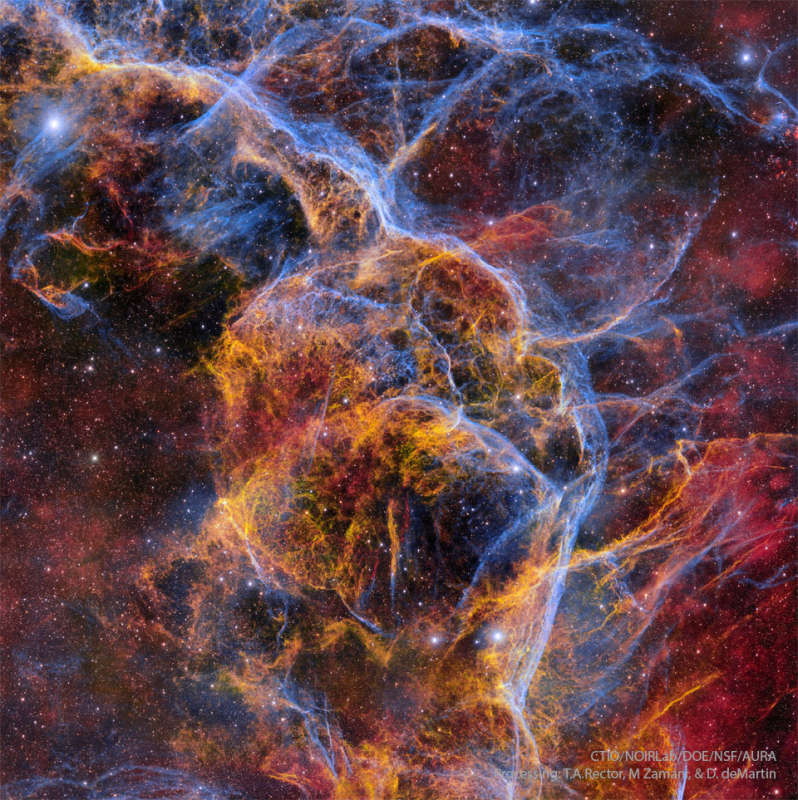Credit & Copyright: CTIO,
NOIRLab,
DOE,
NSF,
AURA;
Processing:
T. A. Rector
(U. Alaska Anchorage),
M. Zamani &
D. de Martin
(Bs
NOIRLab)
Explanation:
The explosion is over, but the consequences continue.
About eleven thousand years ago, a star in the constellation of
Vela could be seen to
explode,
creating a strange point of light briefly visible to
humans living near the beginning of
recorded history.
The outer layers of the star crashed into the
interstellar medium, driving a
shock wave that is still visible today.
The
featured image
captures some of that filamentary and gigantic shock in
visible light.
As gas flies away from the detonated star, it
decays and reacts with the interstellar medium,
producing light in many different colors and energy bands.
Remaining at the center of the
Vela Supernova Remnant is a
pulsar, a star as dense as nuclear matter that
spins around
more than ten times in a single second.
Monday's Eclipse Imagery: Notable Submissions to APOD
1999 2000 2001 2002 2003 2004 2005 2006 2007 2008 2009 2010 2011 2012 2013 2014 2015 2016 2017 2018 2019 2020 2021 2022 2023 2024 2025 |
Yanvar' Fevral' Mart Aprel' Mai Iyun' Iyul' Avgust Sentyabr' Oktyabr' Noyabr' Dekabr' |
NASA Web Site Statements, Warnings, and Disclaimers
NASA Official: Jay Norris. Specific rights apply.
A service of: LHEA at NASA / GSFC
& Michigan Tech. U.
|
Publikacii s klyuchevymi slovami:
supernova remnant - ostatok Sverhnovoi
Publikacii so slovami: supernova remnant - ostatok Sverhnovoi | |
Sm. takzhe:
Vse publikacii na tu zhe temu >> | |
